Here’s a species I’ve gotten dozens of questions about. Quercus virginiana, more commonly known as southern live oak, a hallmark species of the southeast United States and it always comes up in conversation at the nursery. It’s usually brought up after bringing someone’s attention that almost any species of tree can be a good bonsai. And it makes sense why a lot of visitors to the nursery would ask about live oak because I usually get into the whole “a good bonsai has a sense of being ancient and having a story” rant. Experienced bonsai practitioners maybe think of mochikomi when trying to express what good old bonsai feels like. It seems like the general public of southeast Louisiana relate to old trees as being live oak most of the time.
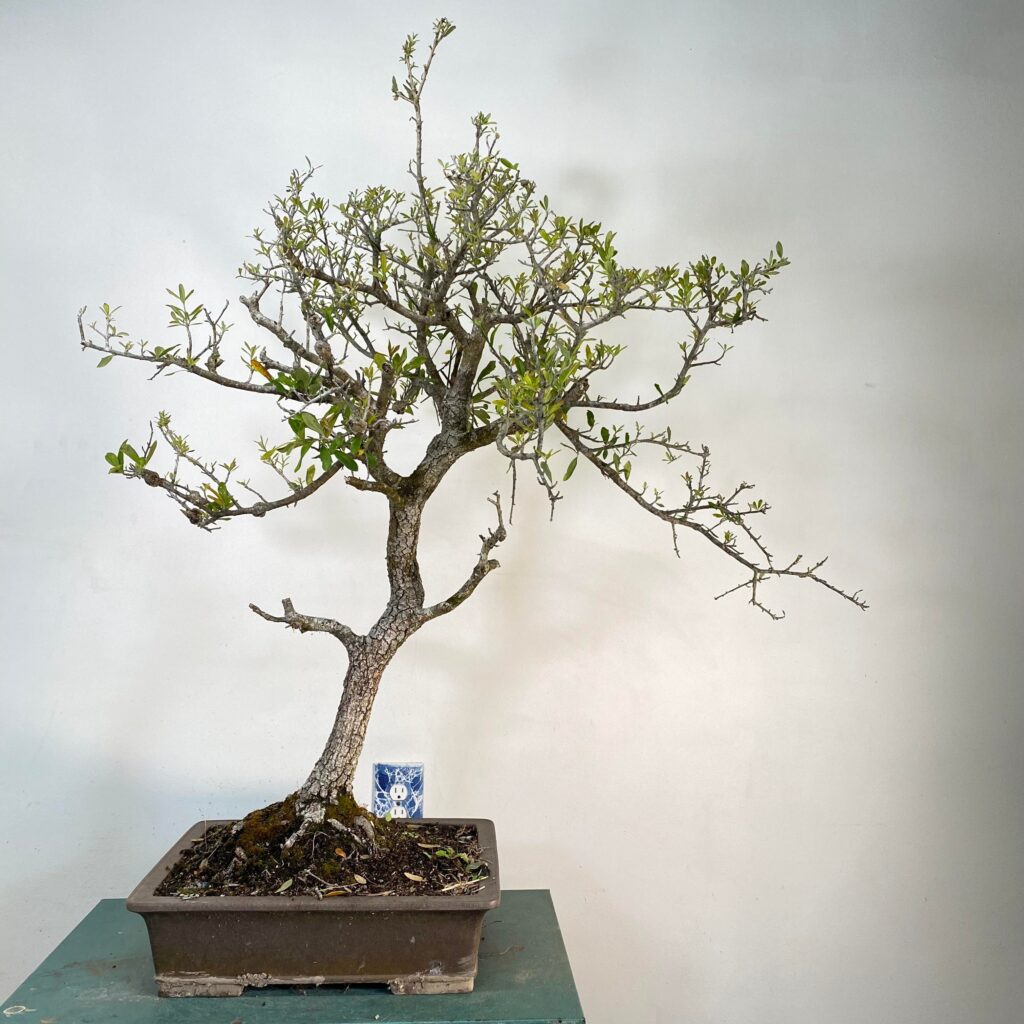
Live oaks are associated with historic southern estates or plantation homesteads. To get good imagery of live oaks in this setting google search “Oak Alley Plantation”. Beautiful photography of the Oak Alley Plantation shows arching and sweeping oak branches framing in the southern style mansion.
The live oak shown here is not particularly reminiscent of the big billowy shape seen in mature oaks. More or less, it would be considered as a candidate for literati style bonsai, but I see much more potential. It was grown from seed 15-20 years ago solely container grown by Greg LeBlanc in Lafayette, La. It has a lot of characteristics that are prevalent in seed grown material for bonsai. Some of the features of this tree were stylistic choices made by the grower that this would one day be pre-bonsai. I’ll be leaning more towards a taller naturalist design once I bring the tree up to health.
There are a few things I would like to address before I begin any kind of styling work on this tree. First and foremost, the root system. I want to introduce some quality bonsai soil into the outer edges of the root ball and then work from the outside in as time goes on. There are a lot of large coarse roots right underneath the base of these tree that need to be worked out. Before I do any hard cut backs on the coarse roots, I would like to grow out some finer feeder roots to sustain the tree and help it recover.
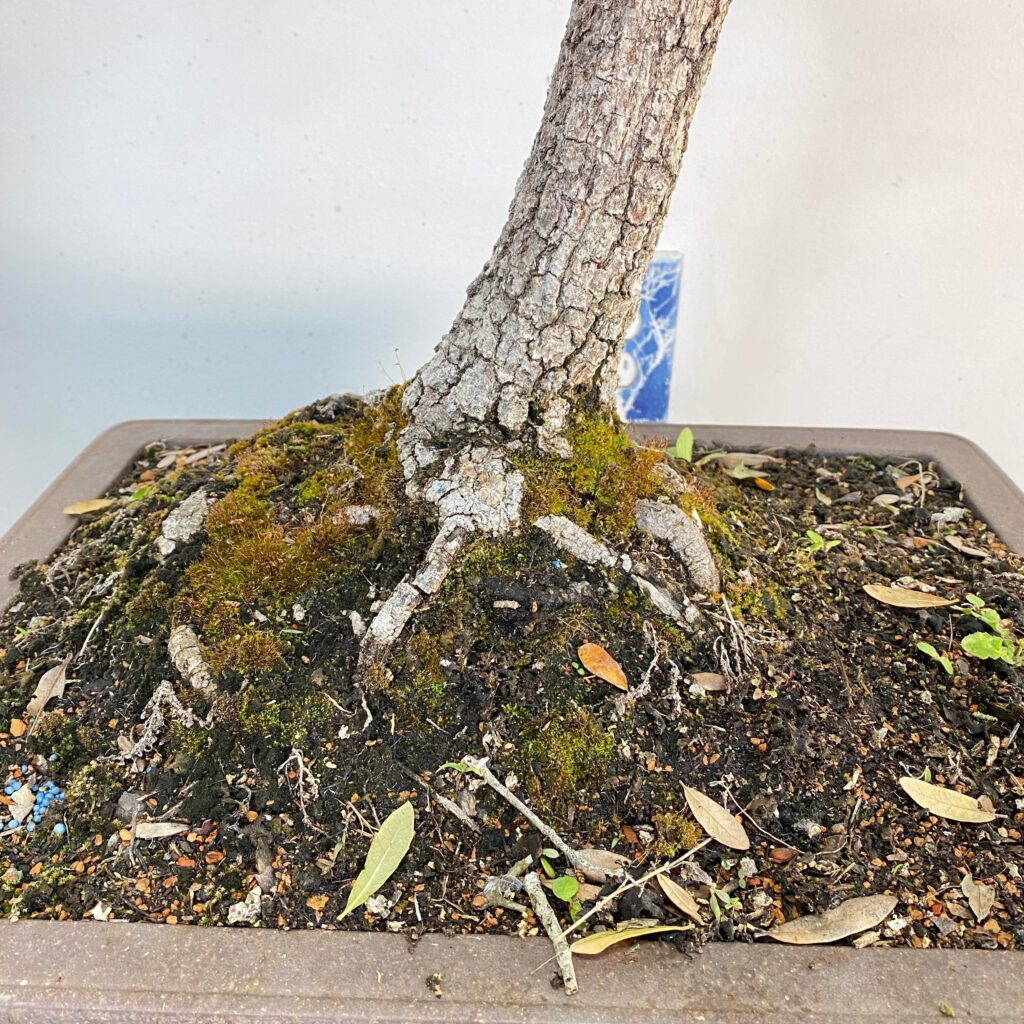
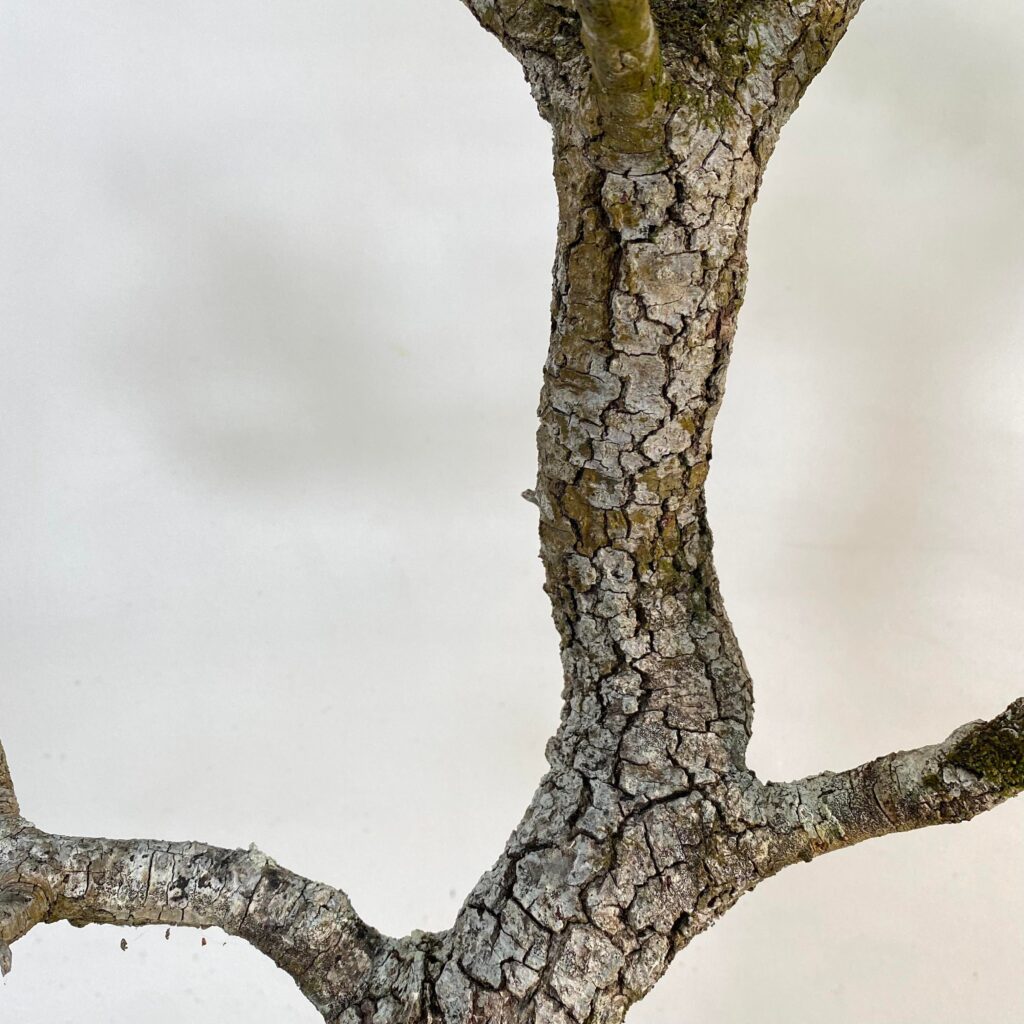
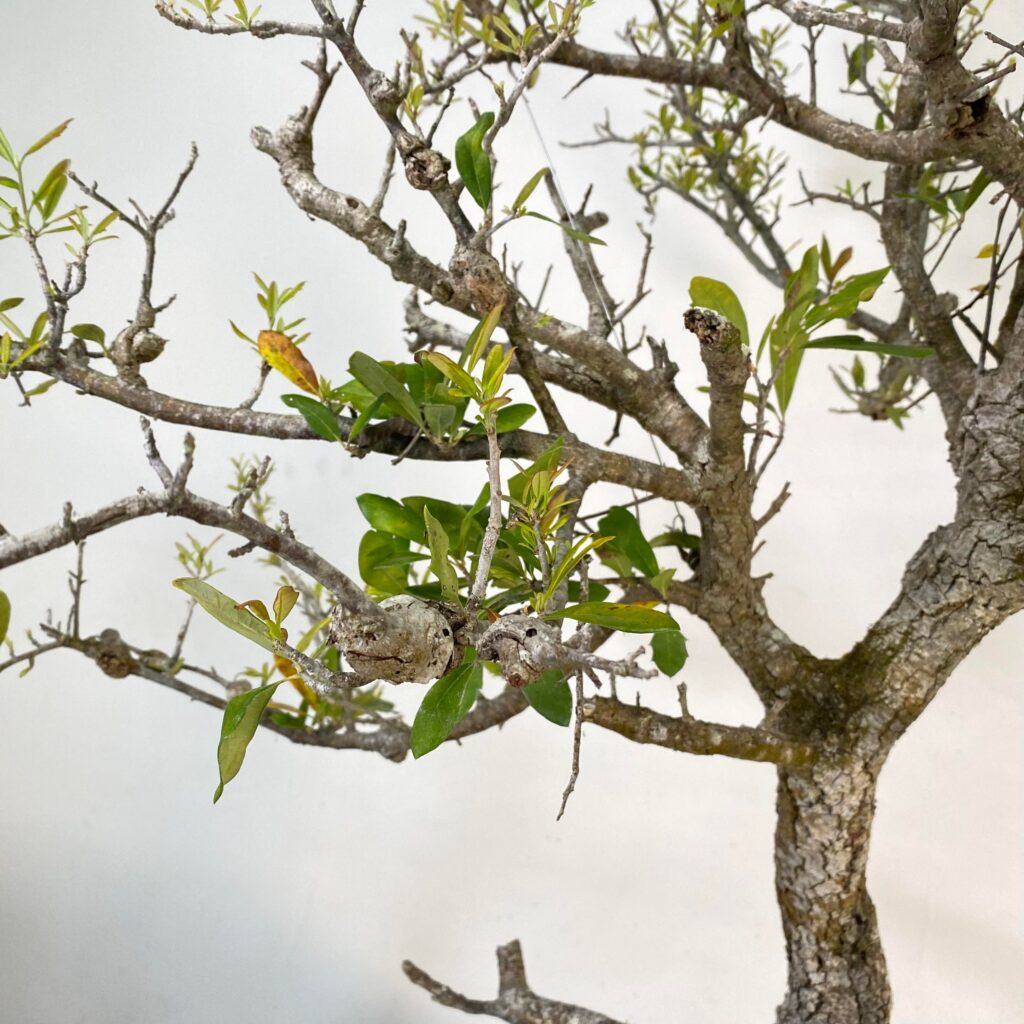
Unfortunately this tree is covered in oak galls. They are not the worst thing in the world to happen to this tree and can be removed easily. The issues that these galls could present in the future is that they severe entire sections of branches. This in turn could result in the loss of fine twigging when developing it later on as well. Oak galls are caused by a parasitic wasp that targets most oak varieties as a host plant to lay their eggs in. It’s very science fiction sounding and may have inspired the premise of the Alien movies. Most likely not but it’s fun to imagine it if you’re plant nerd like me.
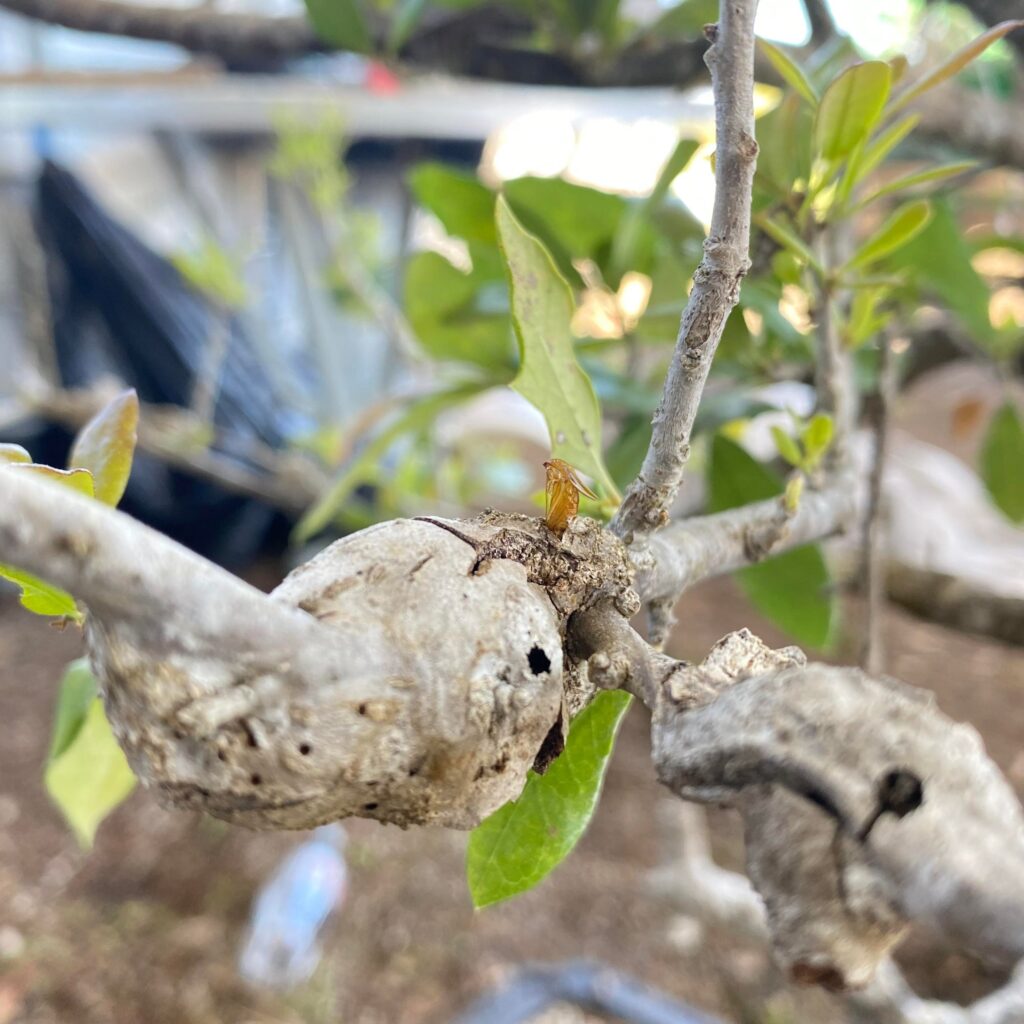
I did a super lite repot on this live oak. It was basically a slip potting but I loosened up the matted roots on the exterior of the root system. It was potted up into a slightly larger plastic training pot. I removed a few of the major oak galls on the smaller branches but left a much as possible intact. I want every extending budding I can get on this tree for a full recovery. I intend on doing some dramatic trimming, bending, and wiring later on done the road with this tree.
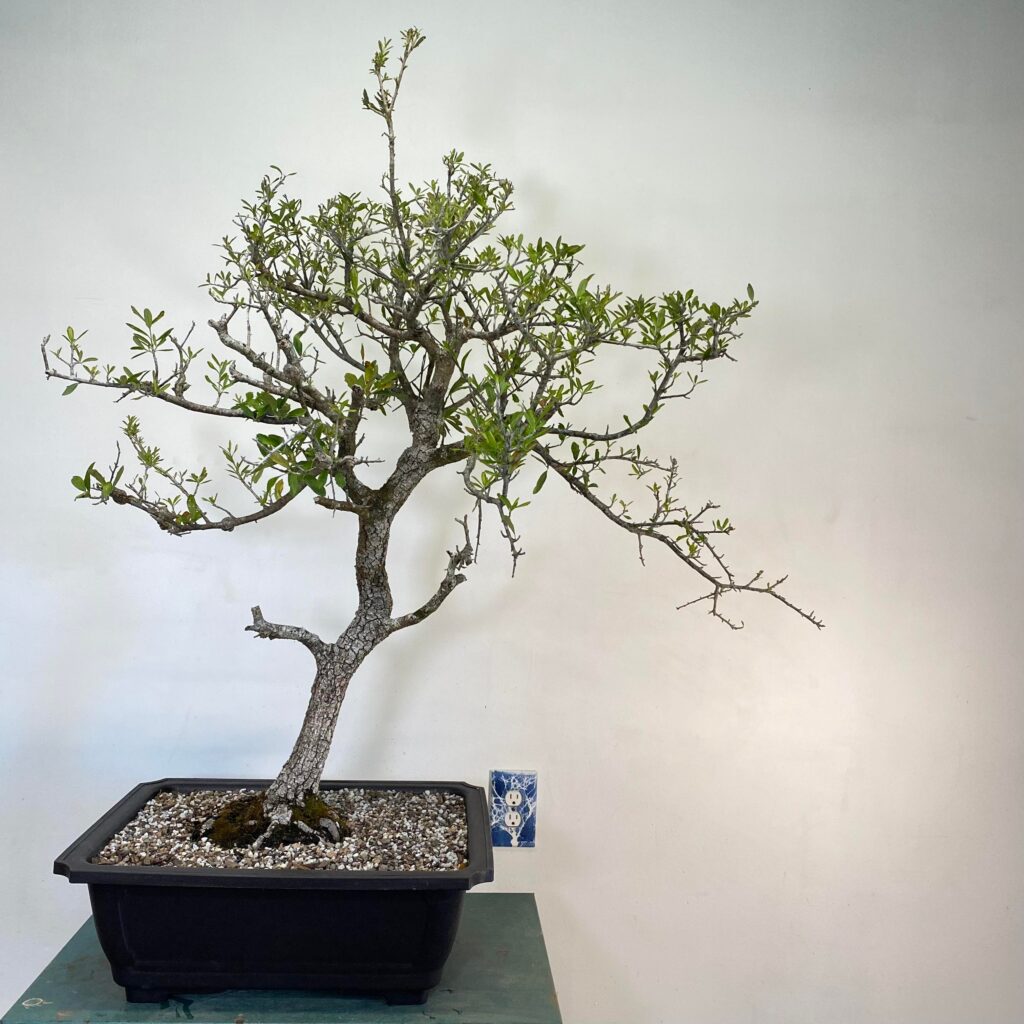
I cannot wait to continue to share the progress of this oak with y’all. I’ll make sure to use at least a few southern style endearments since I’m working with so many southeast native tree.
See y’all’s next time. Come back now, ya herd me.
